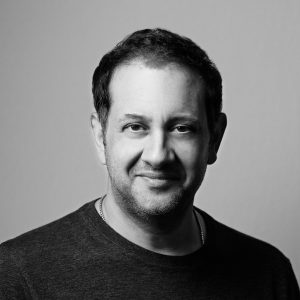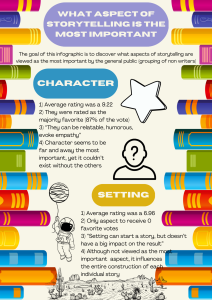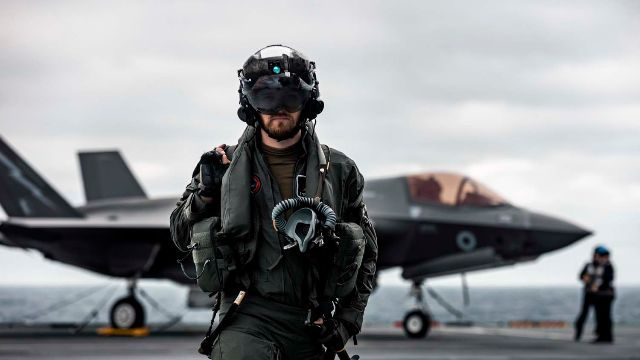The History of Storytelling

Once upon a time, in Chavaux, France 30,000 years ago, the first story was created. It depicted animals and humans, and may have been accompanied by an oral story/retelling. The oral form of storytelling is the first large version of storytelling. These words convey a story in many different ways. They may perform in harmony to create songs. It might also recite poems and epics of heroism and grandeur. It was pivotal in many societies, including native tribes and Ancient Greek society. As the Greeks specifically evolved, they began to imprint those poems and stories into writing. Scholars shared these stores and they became symbols of knowledge. They would share myths and historical accounts that could carry an overall meaning and message. Other writing classics such as the Odyssey and Iliad appeared along with religious writings to spread their own faith. Storytelling in this time became synonymous with community and culture.
Then, suddenly there was a renaissance of Storytelling, which happened to coincide with the Renaissance. Tales of honor, chivalry and love traveled all through the lands by oral and written telling. This was all sped up through the magnificent invention of the 15th century’s printing press. It made books far more readily accessible around the (currently discovered) world. This innovation further led to longer novels and plays that inspired generations. Shakespeare then truly popularized visual storytelling through his plays. His comedies and tragedies are truly iconic and are still read around the globe today. He may have been the most popular of his time, but he wasn’t the only one. Many other artists created other visual stories in their own unique way. Painters and sculptors became extremely popular and many of their works, like the Mona Lisa, are some of the most popular art pieces of all time. This era was one of new storytelling in a wider visual medium.
Later the world became an interconnected society. The further development of technological advancements and inventions helped change storytelling forever. Newspapers spread the daily word around the city, but not around the globe. This changed however, with the invention of the radio. It shared songs, speeches and could speed up the rate of communication at least 100 fold. Then the invention of film created a whole new visual art form. Before you’d have to see actors perform in person, but now you can see Charlie Chaplin and his antics around the world. Although they were just goofy at first and didn’t carry a substantial story, that changes over time.
These changes created more opportunity around the globe, and many of these inventions transcended their original purposes. Movies could share fictional worlds, only found in books up until this point, in clear film. The media and public shared real life stories minutes after they happened with radio. The radio also furthered the popularization of music, which also developed its own storytelling forms, such as concept albums. Results of war were also shared back with command through the radio, which changed war forever. All these new inventions and methods were used, and implemented, for the entertainment and betterment of society. Finally, the internet and video games create an instant story connection around the globe. Today’s society contains an abundance of storytelling to the point where it’s impossible to hide from.

Written arts from centuries ago can still be read today, along with the latest novels. Music from Mozart to Mars is heard daily. Directors like Spielberg and Nolan are still revolutionizing film. Daily news and journalism on all the latest topics. Classic oral storytellers, sharing their culture history that doesn’t exist in writing. All these aspects are even taught to children around the globe. Though an interconnected world, storytelling binds everyone. We embrace it as a new, and old, innovative way to share our collective history and ideals. The End.

Jeremy Breslau Interview
Jeremy Brelau is a writer-director best known for his work in video games. He’s worked on projects such as Call of Duty: Black Ops – Cold War as head writer. He’s had many years of experience in writing after his education at Boston University and the University of Southern California. He shares his insight on how and what is important in creating a story.
Q: Do you think the best stories come through moments of inspiration? Or do you follow a technique or pattern?
A: It has to be both because if I were to wait for inspiration, I probably wouldn’t write enough, or make enough to live.
It’s really sitting down and thinking of ideas, that I certainly could love and be passionate about, but that others could enjoy as well, not only myself. And it’s coming up with multiple ideas and really trying to think of what would have the chance to be the most emotionally touching story and the widest appeal. It’s also depending on the genre, the most exciting or the funniest or the most moving, and I always try to take from life so that it feels real and not just make stuff up.
But often, In the process of sitting and trying to think of something personally, I often don’t end up using any of those things. It’s something that, maybe was inspired by one of those things, or it comes to me later because I read an article, or have an experience, or see something. But if I didn’t do that work, I might not have gotten to the other idea that I end up doing anyway.
So it’s not that it literally comes from sitting and I’m, that’s, yeah, I came up with 20 ideas and I picked one of those. It’s a little more non linear, but that is still work that has to be done sometimes to trigger what you really want to express.
Q: What is important to connect with a character?
A: I think it depends on the kind of story, but overall empathy I think is the most important. Even if you don’t like them, even if you don’t like what they’re doing, you understand why they’re doing it. And there’s a tradition of anti heroes, there’s a tradition of film, and novelistic heroes who we don’t like. The paradigm of hope versus fear is reversed.
And by hope versus fear, in most stories, I hope this hero succeeds and I fear they won’t. But in stories of anti heroes, you could hope they fail and fear they will succeed. you’re still following the story.
It’s hugely important or else it’s going to be a very un-entertaining time. Usually we got about five minutes to understand the story enough to stick with it. I’m either sunk into this and I’m gonna care about this character and their journey, or, I’m not. It’s something I think about a lot.
The Art of the Concept Album
This video shares the story of three albums, written by three artists over three decades. They all carried meaningful change into the music world, and influenced artists for years to come.
How to Write Effective Aspects of a Story
Every story requires a few things. You need characters, a setting, a conflict and a medium to convey that story. Although all these aspects exist in every story, not all stories are good. Some don’t evoke emotion, while others lack a resolution. Here’s some ways to improve some aspects of your story.
Characters:
- Characters need to be emotional
- When writing or depicting a character, you should give empathy through any means. Maybe they have a hard background that some people can relate to. Others might lose someone throughout the story. Whatever it is, connect the character with the audience.
- Give your characters morals
- They need to make decisions, so morals will aid in that. Although, consistency is boring, so it might be beneficial for the character to break their morals once, maybe to save a friend.
Setting:
- The setting should be something that is simple, yet well thought out
- Simple as in easy to understand. It is true that some stories have complex worlds that entrap readers, yet the generality of simplicity is best. Maybe it’s from a different time or planet. Or one historical event ended the opposite of what it did in reality.
- The setting is a place to share your inner creativity
- Think up as many new and creative elements as possible. As you create this world, you might think about a planet or map to imagine the space. Understanding where places exist in this world in your own mind, will make it easier for you to share your vision with the audience.
Conflict:
- Conflict is often the diving engine of the story
- Without conflict, nothing would ever happen. The conflict should involve the characters on a personal level.
- No story is satisfying without change
- The change could be in the environment that the characters cause. Or the change could be inner, by what the characters experience. All this change is driven through the conflict. Conflict takes many forms, like person vs person or person vs society, but by the end of the story, something needs to have changed.
Visuals:
- The visuals or mediums in which you tell a story’s importance on a story are often overlooked
- A book and movie can share things in many different ways. When writing a book you have to describe every detail as in depth as possible. You do this to create your own image inside the reader’s head. That’s much different than a movie, where everything is visually shown. All that extra space in a book is worked towards lighting, props, set design, location and any other tiny visual elements necessary. The medium of a story is thought about naturally, but is still vital, as all the other elements, to a story’s production.









